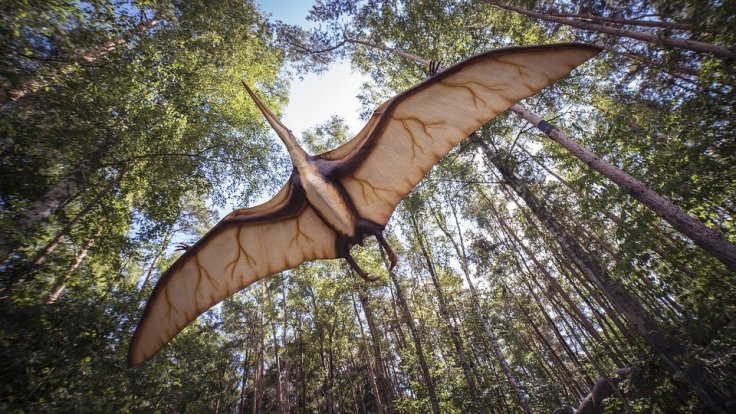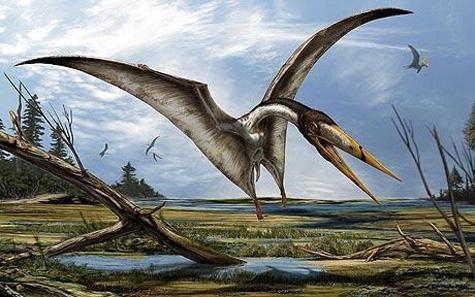Stumbling upon dinosaur and ancient reptilian fossils in the field is not unheard of. However, imagine examining forgotten cataloged fossils of supposed sharks and learning that it is in fact the remains of a mysterious flying reptile never seen before? That is exactly how paleontologists from the University of Portsmouth discovered a new species of pterosaur, one like no other.
Rory Smith, lead author of the study, was analyzing fossils of shark spines that had been housed in the Sedgwick Museum of Cambridge and the Booth Museum at Brighton for over 100 years. While investigating these ancient remnants, Smith learnt that fossils were in fact fragments of jaws of a toothless pterosaur, which had an uncanny resemblance to shark fin spines.
"This find is significant because it adds to our knowledge of these ancient and fascinating flying prehistoric reptiles, but also demonstrates that such discoveries can be made, simply by re-examining material in old collections," said Dr. Dave Martill, co-author of the study, in a statement.

Forgotten And Misunderstood
Most of the fossil collections at the two institutions were acquired between 1851 and 1900—a time when phosphate mining in the English Fens (coastal plains in Eastern England) was at its peak. Workmen working at these sites would collect fossil fragments and sell them for an easy buck. It is amongst such ignored fossils that the new species of pterosaur was unearthed.
While the reliquiae did bear striking similarities with shark fin spines, Smith said that there were subtle differences that made it possible to distinguish the new creature. "One such feature are tiny little holes where nerves come to the surface and are used for sensitive feeding by the pterosaurs. Shark fin spines do not have these, but the early paleontologists clearly missed these features," he explained.
He also added that two of the specimens could be recognized as a pterosaur known as Ornithostoma. However, one specimen showed noticeable uniqueness and belonged to an entirely new species of the winged reptile family, which has been named Ornithostoma sedgwicki Seeley. Thus, what this animal is, remains a mystery.

A Reptile Like No Other
The piece of beak isolated, according to Dr. Martill, is distinct from Ornithostoma is very subtle manners. He compared these subtleties to that between herons and great white egret—two species of coastal birds that look nearly identical and require a trained eye to spot the difference. "Likely the differences in life would have been more to do with color, call and behavior than in the skeleton," added Dr. Martill.
Dr. Martill also highlighted that finding such a species of pterosaur in the UK was of special significance. "Pterosaurs with these types of beaks are better known at the time period from North Africa, so it would be reasonable to assume a likeness to the North African Alanqa. This is extremely exciting to have discovered this mystery pterosaur right here in the UK," he emphasized.

Regrettably, the remains of the new reptilian are heavily fragmented in order to be able to conclusively name a new species of reptiles, expressed Smith. Additionally, Smith speculated that is likely that more remains of the new pterosaur may be uncovered given that the exposures to the rocks from which the fossils were acquired no longer exist. "But I'm hopeful that other museum collections may contain more examples, and as soon as the Covid restrictions are lifted I will continue my search," he concluded.









